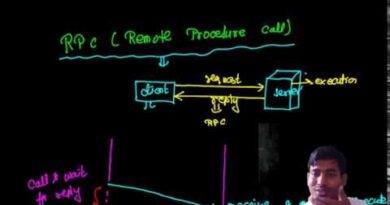An Introduction to Multicast Communication Broadcast and Multicast CISCO Multicast-IP Multicast Routing Technology
An Introduction to Multicast Communication Broadcast and Multicast CISCO Multicast-IP Multicast Routing Technology.

IP Multicast Routing Technology Internet Protocol (IP) Multicast IP Routing Ip Multicast Distributed Systems Multicast Routing Protocols Video Multicast Routing Example IP Multicast Routing Distributed No IP Multicast Routing Cisco. Multicasting Protocols Multicast Communication Multicast Packet Multicast Packet Format Multicast Traffic Example Multicast Vs. Broadcast Multicast Routing.
Contents
- 0.1 An Introduction to Multicast Communication
- 0.2 Broadcast vs. Multicast Communication
- 0.3 What is IP Multicast?
- 0.4 Cisco Multicast & Routing Technology
- 0.5 Multicast Routing Protocols
- 0.6 Benefits of Multicast Communication
- 0.7 Real-World Applications of Multicast
- 0.8 Conclusion
- 0.9 An Introduction to Multicast Communication Broadcast and Multicast CISCO Multicast-IP Multicast Routing Technology
- 0.10 Introduction to IP Multicast BRKRST-126 About the Speaker
- 0.11 Introduction to IP Multicast Routing
- 0.12 IP Multicast Technology Overview
- 1 🌐 Introduction to Multicast Communication
- 2 🔁 Unicast vs Broadcast vs Multicast
- 3 🧩 Multicast in IP Networking
- 4 📡 Cisco Multicast Technologies
- 5 🔧 Key Components of IP Multicast (Cisco Focus)
- 6 🌲 Multicast Trees in Cisco Routing
- 7 🛠️ Multicast Configuration (Cisco Example)
- 8 📚 Summary
An Introduction to Multicast Communication
Multicast communication is a networking technique that allows data to be sent simultaneously to multiple recipients without unnecessary duplication, making it more efficient than traditional broadcast or unicast methods.
Broadcast vs. Multicast Communication
| Feature | Broadcast | Multicast |
|---|---|---|
| Definition | Sends data to all devices in a network. | Sends data only to a specific group of subscribed devices. |
| Efficiency | Wastes bandwidth since all devices receive the data. | Saves bandwidth by delivering data only to interested devices. |
| Usage | ARP (Address Resolution Protocol), DHCP, etc. | Video streaming, VoIP, stock market data, etc. |
| Example | A TV broadcast station sends signals to all TVs. | A webinar where only registered users receive the video stream. |
What is IP Multicast?
IP multicast is a technique where one sender transmits data to multiple receivers across a network, using efficient bandwidth utilization.
-
Uses Class D IP addresses (224.0.0.0 – 239.255.255.255).
-
Reduces network load by sending only one copy of data, which is distributed to multiple receivers.
Cisco Multicast & Routing Technology
Cisco provides advanced multicast routing solutions that help in network efficiency, video conferencing, and content distribution.
Multicast Routing Protocols
Cisco routers use different multicast routing protocols to manage multicast traffic:
PIM (Protocol Independent Multicast) – Most commonly used protocol.
-
PIM Dense Mode (PIM-DM) – For smaller networks, floods multicast traffic first.
-
PIM Sparse Mode (PIM-SM) – For large networks, uses a Rendezvous Point (RP) to optimize traffic flow.
IGMP (Internet Group Management Protocol) – Helps hosts join or leave multicast groups.
MSDP (Multicast Source Discovery Protocol) – Helps in sharing multicast sources between different networks.
Benefits of Multicast Communication
Bandwidth Optimization – Reduces redundant traffic.
Efficient Streaming – Ideal for video conferencing, IPTV, and online gaming.
Scalability – Can support thousands of receivers with minimal resource usage.
Better Network Performance – Minimizes congestion compared to unicast and broadcast.
Real-World Applications of Multicast
Live Streaming & IPTV – Used by YouTube Live, Netflix, and OTT platforms.
Financial Services – Stock market updates and real-time trading data.
E-Learning – Online classes where multiple students join live lectures.
Military & Defense – Secure and efficient communication for command centers.
Conclusion
Multicast communication is critical for modern network applications that require efficient, one-to-many data transmission. Cisco’s multicast routing technologies help in managing this process effectively, making networks faster, scalable, and bandwidth-efficient.
Would you like detailed Cisco router configurations for multicast?
An Introduction to Multicast Communication Broadcast and Multicast CISCO Multicast-IP Multicast Routing Technology
Introduction to IP Multicast BRKRST-126 About the Speaker
Introduction to IP Multicast Routing
IP Multicast Technology Overview
Here’s a clear and structured introduction to Multicast Communication, especially in the context of Cisco networking and IP multicast routing technology. This is ideal for computer networking students, IT professionals, or anyone preparing for certifications like CCNA / CCNP.
🌐 Introduction to Multicast Communication
📡 What is Multicast?
Multicast is a method of sending a single stream of data from one sender to multiple recipients, but only to those who have requested it.
It lies between:
-
Unicast (one-to-one)
-
Broadcast (one-to-all)
➡️ Multicast = one-to-many (selected group)
🔁 Unicast vs Broadcast vs Multicast
| Type | Description | Example |
|---|---|---|
| Unicast | One-to-one communication | One PC sends a file to another |
| Broadcast | One-to-all communication (in LAN) | ARP requests on a network |
| Multicast | One-to-many (only interested nodes) | Video conference, IPTV, stock feeds |
🧩 Multicast in IP Networking
🔹 Uses:
-
Live video streaming (IPTV)
-
Online gaming
-
Financial market data
-
Teleconferencing (Zoom, Webex multicast backbones)
🔹 Multicast IP Address Range:
-
224.0.0.0 to 239.255.255.255
➡️ Reserved by IPv4 Class D for multicast
Example:
-
224.0.0.1 – All hosts on local subnet
-
224.0.0.2 – All routers on subnet
📡 Cisco Multicast Technologies
Cisco devices use standard multicast protocols to manage routing:
✅ Multicast Routing Protocols:
| Protocol | Description |
|---|---|
| PIM | Protocol Independent Multicast (most used) |
| IGMP | Internet Group Management Protocol (host to router) |
| MSDP | Multicast Source Discovery Protocol (inter-domain) |
| MLD | Multicast Listener Discovery (IPv6) |
🔧 Key Components of IP Multicast (Cisco Focus)
-
Source – Sender of multicast traffic
-
Receiver/Host – Devices that join multicast group
-
Multicast Group Address – Example: 239.1.1.1
-
IGMP – Host tells router it wants to receive multicast
-
PIM – Routers build multicast distribution tree
🌲 Multicast Trees in Cisco Routing
🔹 PIM-Dense Mode (PIM-DM):
-
Flood and prune method
-
Good for small networks
🔹 PIM-Sparse Mode (PIM-SM):
-
Uses a Rendezvous Point (RP)
-
Efficient for large networks
🛠️ Multicast Configuration (Cisco Example)
For IGMP configuration:
📚 Summary
| Concept | Explanation |
|---|---|
| Multicast | One-to-many communication (efficient) |
| Address Range | 224.0.0.0 – 239.255.255.255 |
| Routing Protocols | PIM, IGMP, MSDP |
| Cisco Commands | ip multicast-routing, ip pim sparse-mode |
| Key Use Cases | Video streaming, conferencing, data replication |
Would you like:
-
A PDF summary of this note?
-
A network topology diagram showing multicast flow?
-
A real-time Cisco lab simulation (Packet Tracer instructions)?
Let me know, and I can provide the next steps!


